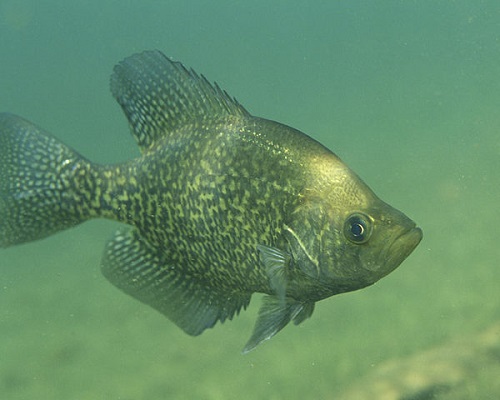Difference Between Crappie And Bluegill
The Crappie is a popular sport fish found mostly in the eastern half of the USA. It has two varieties – white and black.
The Bluegill is a member of the sun fish family. It is found in the USA, ranging from coastal Virginia to Florida, Texas, northern Mexico, western Minnesota and western New York.
Features and size
With deep and laterally compressed body, the black Crappie’s head is small, back arched and mouth large with the upper jaw extending below the eye. The dorsal and anal fins are large and identical in shape. On the other hand, the white Crappie looks like the black Crappie excepting that it has 5 to 6 dorsal spines unlike the black Crappie that has 7 to 8 spines. The other difference between the two is that the white Crappie has dark pigment on its sides while the black Crappie has black pigment.
The Crappie has the maximum length of 19 inches and the maximum weight of a little less than 6 pounds. The average life span of this species is around 15 years. A young Crappie has a speedier growth rate in the four years in warm water. Its growth is slower in cooler water. The Crappie feeds on crustaceans and dipterous larvae. The larger one feeds on minnows and other species of small fish.
The Bluegill, on the other hand, grows up to 12 inches long and weighs about 4.5 pounds. It has dark spots at the base of the dorsal fin and vertical bars on its sides. The back and upper sides are dark olive green with a blend of brown, orange or lavender on the sides. The belly is yellow to orange.
The Bluegill lives in streams, ponds, rivers and lakes. It can live in both shallow and deep water. It moves back and forth, hides inside tree stumps and seek shelter among water plants.
Reproduction
The ideal spawning time of the Crappie ranges from March to July when water is warm. It produces 40000 to 150000 eggs depending on its size and age. The spherical egg measures around 0.93 mm in diameter. Nests are excavated by the male on substrates of sand or mud. After spawning is over, the male one guards the nest for the next 2 to 3 days when the eggs hatch. After the initial period of protection expires, the larvae take shelter in quiet and shallow water to save themselves from the predators such as piscivorous fish and aquatic insects.
In May and June, when temperature is 70 degree Fahrenheit, the Bluegill begins to spawn. The Bluegill starts spawning at the age of two, although some start spawning in the first year of life.
It extends till water temperatures fall. The Bluegill has a long and uninterrupted spawning season and this often leads to huge population every year, provided predation and fishing pressure are low. Nests are created in shallow water, one to two feet in depth.
A four-year old female Bluegill lays up to 50000 eggs. Like the Crappie, the male Bluegill guards the nest which is dug into the bottom of the river bed and protects the baby fish. The Bluegill acts as hosts for several parasites such as Eastern Lamp Mussels and The Big Red Worm. The young Bluegill feeds on plankton and changes its diet to aquatic insects and their larvae in course of time.
Both the Crappie and the Bluegill are palatable species and a number of food items can be prepared with them. But as people are very wary about eating wild fish for health reasons, human consumption of these two species is limited.
- Difference Between Bharatanatyam And Odissi - February 22, 2016
- Difference Between Socialist And Democrat - January 11, 2016
- Difference Between Capitalism And Imperialism - January 11, 2016
Search DifferenceBetween.net :
Leave a Response
References :
[0]http://www.in.gov/dnr/fishwild/files/Bluegill_web_pdf.pdf
[1]HTTPS://TPWD.TEXAS.GOV/HUNTWILD/WILD/SPECIES/BGL
[2]http://www.flmnh.ufl.edu/fish/gallery/Descript/BlackCrappie/BlackCrappie.html
[3]https://en.wikipedia.org/wiki/Crappie

